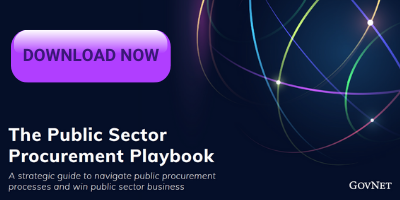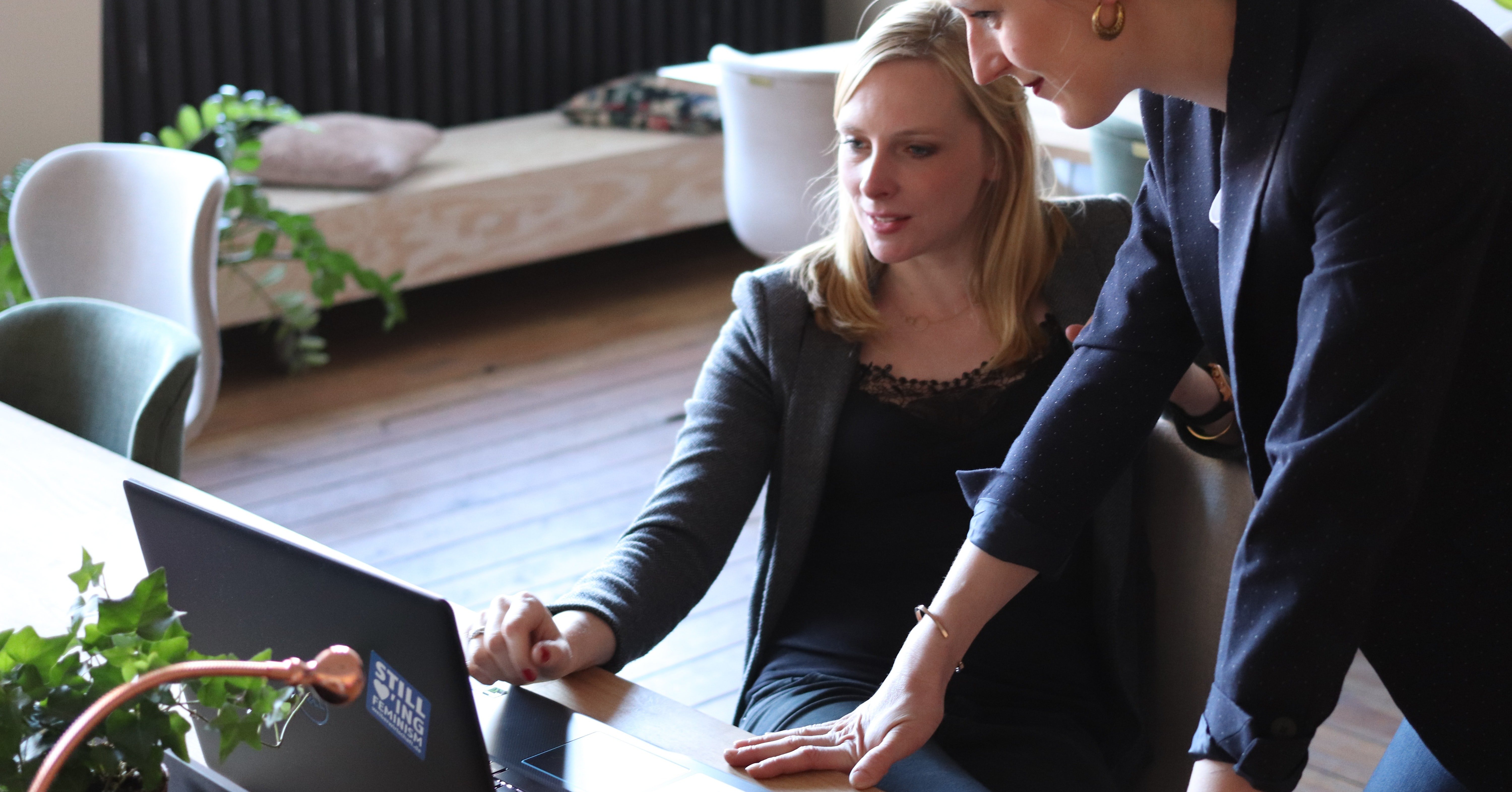How to Win Government Contracts
You’ve been trawling Contract Finders and discovered the perfect bid opportunity for you. It fits what you offer and the requirements mirror your past experience. However, you still need to bid by creating a tender response - the most crucial part of any procurement process from the bidding company's perspective.

Developing this kind of proposal isn’t a simple task. Similarly, there isn't a template you can reuse each time you bid, as each tender is unique. However, by following these steps, you can prepare properly, write a winning bid and keep abreast of the do’s and don’ts involved with winning government contracts.
- Preparation
- Analyse the Tender Document
- Developing a Tender Response
- Provide a Compelling Pricing Model
- Proofread
- Include a Cover Letter or Executive Summary
Preparation
No tender response can be written or finalised without preparation. Research is fundamental to your bid writing capabilities and the foundation of any good sales ability. Doing research applies to the whole team involved with the bid, no matter their responsibility. The more you and your team know about potential clients, the more you can wow them and meet and exceed their needs and expectations.
Where possible, begin communication with a potential government client before you start working on the tender response. This is where you can get a feel for their organisation and clarify anything that wasn’t clear in the tender document itself.
However, do remember that these questions will have to be made anonymously. The answers to which will be provided to all bidders to ensure a fair bidding process.
You must research the background of the tender document, the organisation who issued it, their past endeavours and the current market conditions relating to the specific industry at hand.
Remember, communicating with this market will offer you bespoke knowledge you might not have come across previously. Furthermore, don’t be afraid of speaking to the organisations that issued the tender documents. It’s in their best interest to get the best bids during the application, so supplying the information when requested will always be something they’ll oblige.
Analyse the Tender Document
Technically, this comes as part of the preparation and research phase, but it's important enough to demand its own section.
You need to analyse the tender document with a fine-toothed comb, poring over every paragraph, requirement and stipulation. Treat it as a guide to winning the contract. Your tender response will have to satisfy every requirement proposed by the tender document and work to go above and beyond what's needed.
In that regard, public sector organisations are looking for the tender responses that are MAT - the Most Advantageous Tender (which has replaced the ‘Most Economically Advantageous Tender’, otherwise known as MEAT). This makes a tender response well developed and offers the most at the best price.
Read the tender document carefully as a team. Having a universal understanding of what's required and how the tender process will proceed will lower any risk of mistakes.
Developing a Tender Response
Developing a tender response or ‘writing a bid’ is the most crucial phase within winning government contracts. Start this as soon as possible and take your time during the writing. A tender response rushed is a tender response not worth submitting.
Tender responses need to satisfy the following:
Promote Your Benefits
While a tender response covers what you do, how you do it and how much it will cost, it also needs to include the benefits of working with you. This is just as fundamental as including costing and without it, the public sector organisation will assume you have no benefits to bring to the table.
The benefits you offer need to be in line with the problems the client is facing. Do they solve them? Do they go beyond simply solving them? Ensuring you describe benefits that set you apart from the competition is an effective way of getting closer to success.
The benefits need to provide the following:
- Something the client can’t get anywhere else.
- New ideas and alternatives to what they’ve done or suffered from in the past.
- How the entire experience will be different in comparison to the last organisation that fulfilled the contract.
Detail the Potential Impact
A successful tender response presents a solution that will provide benefits and services beyond the scope set out by the tender document. Effectively, this also means providing something known as ‘Social value’, as mentioned by the Government’s Procurement Green Paper, which includes positive social, economic and environmental outcomes and how satisfying the contract could impact the local area.
Countless tender responses only detail how x contract will be satisfied by x response - a solution only equal to the problem. The right tender response examines the current market and delivers a solution beyond what's required, fulfilling more than was asked.
These are the type of solutions that go down very well in the public sector, providing for more than one need and potentially benefiting the wider local population.
Back-Up Your Claims
While you should include what impact you will have, you also need to include how it’s done and where it’s been done in the past.
Assertions aren’t enough. You need to back up your claims and propositions with statistics, case studies and data. This is the point you collate all the relevant supporting information that proves what you’re saying.
Tender responses can’t be implausible - they need to be tangible. Even if you’ve won countless contracts in similar fields in the past, you can’t build a tender response based on faith. Show the public sector organisation that you can do what you say.
Provide a Compelling Pricing Model
Being the cheapest option doesn’t prove your solution will be enough to satisfy the contract requirements. Being the most expensive isn’t able to do that either. The cheapest bid doesn’t guarantee a win and the most expensive doesn’t prove the service is the best.
Under-pricing or over-pricing could harm your bid’s success, so the pricing model needs to be both compelling and competitive.
UK regulations involving procurement advises buyers to focus on tender responses which are the best price for the best quality. For example, if two providers have the same price but one offers a better service, then that organisation is more likely to win. Alternatively, two have the same service, but different prices will see the cheaper option more likely to succeed.
Pricing models also need to include data involving full life-cycle costs. Will there be any future costs, such as employing new staff to accurately provide a service? This may be the case in projects like construction that might require third-party support. Including full life-cycle costs isn’t a problem.
While it may be more expensive, it's also a more accurate description of a contract’s total cost. The fewer data missing from the tender response, the more accurately a contracting organisation can decide.
Proofread
Finally, proofread. This is a small but vital part of your overall bid process. It lets you determine if you’ve made any easily-corrected spelling or grammar mistakes and allows you to evaluate your argument.
Have you answered all the questions and met all the requirements? Developed a persuasive and valid narrative? Proofreading is more than just grammar and tone; it’s about sanding off every rough edge.
Include a Cover Letter or Executive Summary
This isn’t a definite requirement, but it’s always worth including a cover letter in your bid. This document offers a little more personalisation, responding to the bid invitation and summarising the bid's main message quickly and succinctly.
It can include:
- The origin and purpose of your bid, alongside your motivating factors.
- A summary of your experience providing similar contractual services.
- Details of how the work will be carried out alongside a potential timeframe.
Similarly, you could also include an executive summary, which is a high-level statement that comes after the cover letter. It’s an offer you give directly to the buyer, addressing their needs and goals directly. While it’s not a mandatory inclusion, it’s worth adding to help develop your sales pitch and demonstrate the impact of your proposed solution. It’s short, persuasive and to the point.
Developing a tender response to win contracts is potentially the most important part of the overall procurement process, but it isn't the only thing worthy of consideration. There are sales tactics, technology choices, contextual awareness and questions about maintaining contracts that all deserve time to research and prepare for.
Public sector procurement is an increasingly lucrative opportunity for businesses - the key is knowing how to discover contracts and make connections. To do so, attend our virtual summit, the Public Sector Show 2021.
The Public Procurement Playbook
Want to learn more about the public sector procurement process and win more public sector business? Download the Public Procurement Playbook.
Topics Covered Include:
- Public Procurement Trends & Stats
- How to Target and Find Contracts
- Improving Sales Potential & Outreach Tips
- Tips for Winning Contracts
- Managing the Bid Process
- Links to Other Useful Resources



